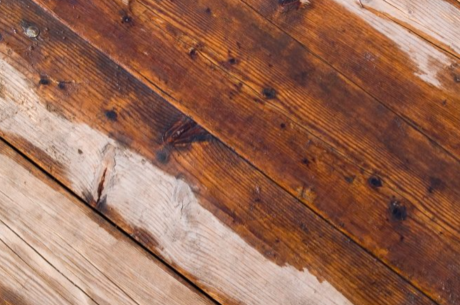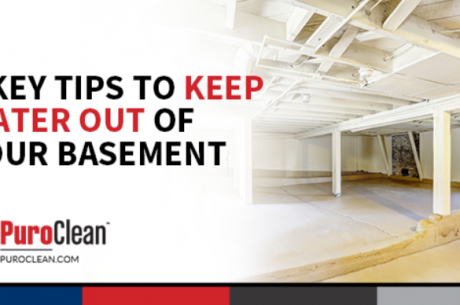Welcome to our guide on how to paint over water damage. This is about tackling one of the most persistent headaches for homeowners: water damage. Whether it’s from a leaky roof, burst pipe, or flooding, water damage can wreak havoc on your walls, leaving unsightly stains and compromising the integrity of your home.
In our previous post we have discussed how water damage affects paint but In this comprehensive blog post, we’ll walk you through the process of painting over water damage, restoring your walls to their former glory. From assessing the extent of the damage to selecting the right materials and techniques, we’ve got you covered. So grab your paintbrush and let’s dive in!
Before you Paint Over Water Damage
Before you paint over water damage, it’s essential to address the underlying issues to prevent future problems. Here’s what you should do:
Identify the Source:
Determine the source of the water damage and fix it promptly. Whether it’s a leaking roof, plumbing issue, or poor drainage, addressing the root cause is critical to prevent further damage.
Dry Out the Area:
Ensure that the affected area is completely dry before proceeding with any repairs or painting. Use fans, dehumidifiers, or even professional drying services if necessary to expedite the process and prevent mold growth.
Inspect for Mold:
Water damage often creates an environment conducive to mold growth. Inspect the area thoroughly for any signs of mold or mildew and address it promptly using appropriate cleaning solutions or professional remediation services if needed.
Assess the Damage:
Evaluate the extent of the damage to determine the appropriate repair methods. Minor water stains may only require surface treatment, while more severe damage might necessitate drywall replacement or other extensive repairs.
Prime the Surface:
Before painting, it’s crucial to apply a high-quality primer specifically designed to seal and cover water stains. This will prevent any residual stains from bleeding through the new paint and ensure a smooth, even finish.
How to Paint Over Water Damage
Painting over water damage requires careful preparation and attention to detail to ensure a seamless and long-lasting result.
Here’s a step-by-step guide to help you tackle this task effectively:
1. Assess the Damage:
Before you start painting, thoroughly inspect the affected area to determine the extent of the damage. Look for water stains, discoloration, peeling paint, or any other signs of water intrusion. Identifying the severity of the damage will help you plan the necessary repairs and select the appropriate materials.
2. Address the Source of the Water Damage:
It’s crucial to identify and fix the source of the water damage before proceeding with any painting. Whether it’s a leaking roof, a burst pipe, or poor ventilation, addressing the root cause will prevent future damage and ensure the success of your painting project.
3. Repair Damaged Surfaces:
Depending on the severity of the water damage, you may need to repair or replace damaged surfaces such as drywall or plaster. Use joint compound to fill in any cracks, holes, or uneven areas, and sand the surface smooth once the compound has dried.
4. Clean the Surface:
Thoroughly clean the affected area to remove any dirt, debris, or residue left behind by the water damage. Use a mild detergent solution and a sponge or cloth to scrub the surface gently, then rinse with clean water and allow it to dry completely.
5. Apply a Stain-Blocking Primer:
To prevent any remaining water stains from bleeding through the new paint, apply a high-quality stain-blocking primer to the entire surface. Be sure to choose a primer specifically designed for use over water stains, and follow the manufacturer’s instructions for application.
6. Choose the Right Paint:
Select a high-quality paint that is suitable for the surface you’re painting and the conditions of the room. For areas prone to moisture, such as bathrooms or kitchens, consider using a mold-resistant paint with a satin or semi-gloss finish for added durability and ease of cleaning.
7. Paint the Surface:
Once the primer has dried completely, you can proceed with painting the surface. Use a brush, roller, or paint sprayer to apply a thin, even coat of paint, working from top to bottom and overlapping your strokes slightly to ensure full coverage. Allow the first coat to dry completely before applying additional coats as needed.
8. Inspect and Touch Up:
Once the paint has dried, carefully inspect the surface for any missed spots, uneven coverage, or imperfections. Touch up any areas as needed, and allow the paint to cure fully according to the manufacturer’s recommendations before reassembling the room or applying any additional finishes.
How to paint over water stained drywall
To paint over water-stained drywall, follow these steps:
1. Preparation:
Assess the extent of the water stains and address any underlying issues causing the water damage. Clean the surface thoroughly with a mild detergent solution and allow it to dry completely.
2. Priming:
Apply a high-quality stain-blocking primer to the water-stained areas. This will prevent the stains from bleeding through the new paint and ensure a smooth finish.
3. Repair:
If the water damage has caused any structural issues, repair the damaged drywall by filling in cracks, holes, or damaged areas with joint compound. Sand the surface smooth once the compound has dried.
4. Painting:
Choose a paint specifically formulated to cover stains, such as a stain-blocking primer or a paint-and-primer combo. Apply a thin, even coat of paint using a brush, roller, or paint sprayer, working from top to bottom and allowing each coat to dry completely before applying additional coats if necessary.
What paint to use to cover water stains?
When covering water stains, it’s essential to use a high-quality stain-blocking primer specifically designed to seal and cover water stains effectively. Look for a primer that explicitly mentions its ability to block stains, such as water, smoke, or nicotine stains. These primers create a barrier that prevents the stains from bleeding through the new paint.
Some popular options include:
Zinsser Bulls Eye 1-2-3 Primer:
This versatile primer is excellent for covering water stains, as well as other types of stains and odors. It adheres well to various surfaces and provides a smooth base for paint.
KILZ Original Interior Primer:
Known for its superior stain-blocking properties, KILZ Original Primer is suitable for covering water stains on interior surfaces like drywall, plaster, and wood.
Sherwin-Williams ProBlock Interior Oil-Based Primer:
This oil-based primer effectively seals water stains and provides excellent adhesion for paint. It’s suitable for use on interior surfaces and offers long-lasting protection against stains.
Benjamin Moore Fresh Start Multi-Purpose Latex Primer:
This latex-based primer is low odor and easy to clean up with water. It effectively blocks stains and provides a durable base for paint on interior surfaces.
How to stop water marks from coming through paint
Address the Source:
Identify and fix the source of the water intrusion, whether it’s a leaky roof, plumbing issue, or condensation problem. Fixing the root cause will prevent future water damage and staining.
Seal the Surface:
Before painting, apply a high-quality stain-blocking primer to the affected areas. This will seal the surface and prevent water marks from bleeding through the new paint.
Use Mold-Resistant Paint:
Consider using a mold-resistant paint for areas prone to moisture, such as bathrooms or kitchens. These paints are designed to withstand moisture and resist mold growth, providing added protection against water marks.
How do I get rid of brown water stains on my ceiling?
Identify the Cause:
Determine the source of the water stains, whether it’s a leaky roof, plumbing issue, or condensation problem. Addressing the root cause is essential to prevent further damage.
Clean the Ceiling:
Use a mild detergent solution to clean the stained areas of the ceiling. Gently scrub the surface with a sponge or cloth to remove any dirt, debris, or residue.
Apply a Stain-Blocking Primer:
Once the ceiling is clean and dry, apply a stain-blocking primer to the water-stained areas. This will seal the stains and prevent them from bleeding through the new paint.
Paint the Ceiling:
After the primer has dried, paint the ceiling with a high-quality paint suitable for ceilings. Apply a thin, even coat of paint using a brush or roller, working from one end of the ceiling to the other.
In conclusion, painting over water stains requires attention to detail, proper preparation, and the right materials. By following the steps outlined in this guide, you can effectively cover water stains on drywall and prevent them from bleeding through the new paint. Remember to address the underlying cause of the water damage to prevent future issues and ensure the longevity of your paint job.
With the right primer and paint, you can restore the beauty of your walls and ceilings and protect them from further damage.
Thank you for reading our guide on how to paint over water-stained drywall. We hope you found it helpful and that it empowers you to tackle this project with confidence. If you have any further questions or need assistance, feel free to reach out.




 PuroClean of Bulls Head
PuroClean of Bulls Head